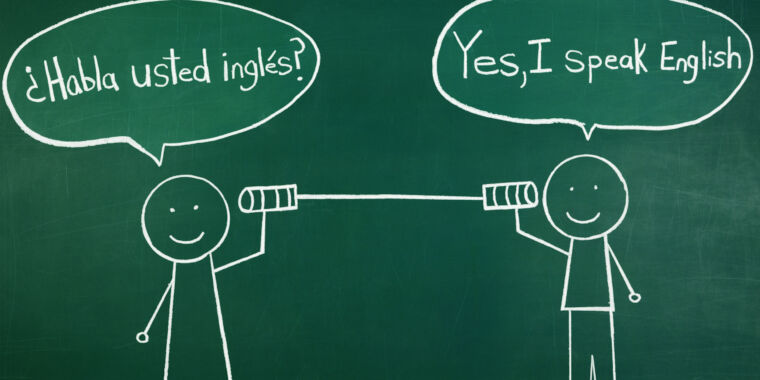Single brain implant restores bilingual communication to paralyzed man

🌈 Abstract
The article discusses the potential of brain implants to restore communication for those who have become paralyzed due to injury or disease. It focuses on a clinical trial at the University of California, San Francisco, where one of the patients enrolled was bilingual, using both English and Spanish. The researchers found that the brain's language processing areas showed consistent signals for both languages, suggesting that training the system to recognize one language could help improve its recognition of the other.
🙋 Q&A
[01] Brain Implants and Bilingualism
1. What is the potential of brain implants in restoring communication for paralyzed individuals?
- Brain implants have the potential to ultimately restore communication for those who have become paralyzed due to injury or disease, but they are currently limited to testing in clinical trials.
2. How did the bilingual patient in the UCSF clinical trial provide insights into how the brain handles language?
- By tracking brain activity in the area where the intention to speak gets translated into control over the vocal tract, the researchers found that both English and Spanish produced consistent signals in this area. This suggests that training the system to recognize one language could help improve its recognition of the other.
3. Why is it important to restore communication in multiple languages for bilingual individuals?
- Bilingual people often change languages based on different social situations or within a sentence to express themselves more clearly. Restoring communication in all the languages a person speaks should be a goal for restoring communication to people, as bilingual abilities are often a key component of their personalities.
[02] Technical Aspects of the Brain-Computer Interface
1. How does the brain-computer interface system work in translating neural activity into speech?
- The system involves placing relatively simple implants (128 electrodes) into the motor region of the brain, which translates intentions to perform actions into the signals needed to trigger muscles to execute them. For speech, this means converting the desire to say a word into the muscle activity needed to control the mouth, tongue, breath, and vocal cords.
2. How does the system handle the complexity of translating neural activity into specific words?
- The process of detecting these neural signals is complex, as the activity looks like a noisy series of "spikes" or bursts of voltage changes. The system uses AI to associate certain patterns of activity with specific words, requiring training the software to recognize when the participant wants to say specific words based on their imagined speech.
3. How did the researchers leverage the bilingual patient's abilities to train the system?
- The researchers trained the system to recognize 50 English words, 50 Spanish words, and a few that were identical in both languages, for a total of 178 distinct words. This allowed them to take advantage of the overlaps between the two languages in terms of how the words are produced, improving the system's overall recognition capabilities.